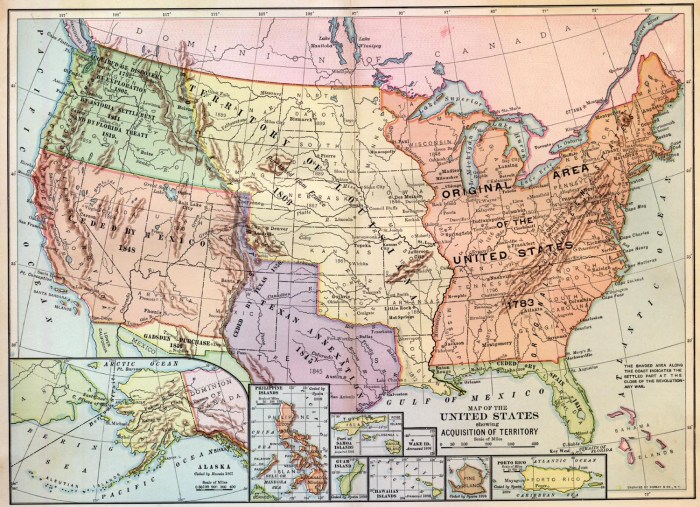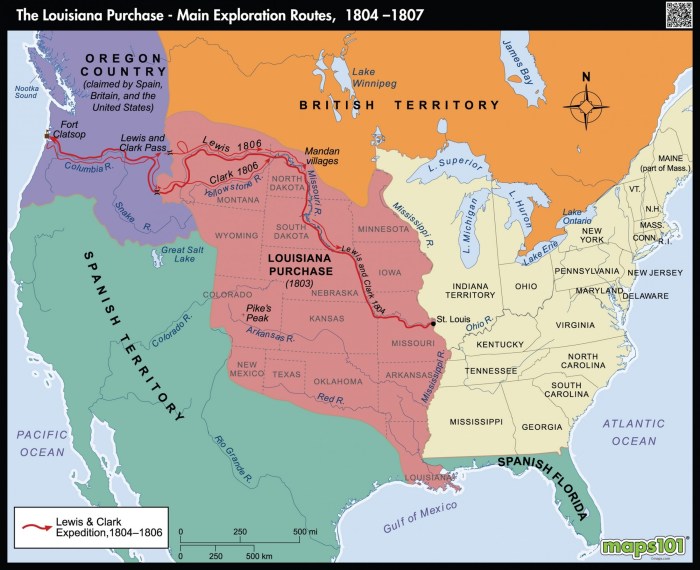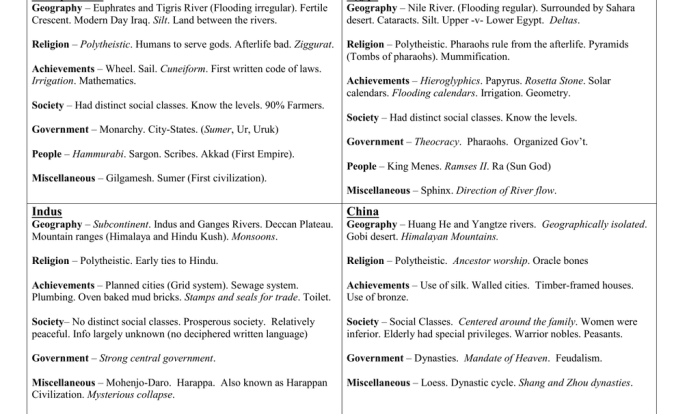Unveiling the Louisiana Purchase 1803 Map Worksheet Answers, this exploration delves into a pivotal moment in American history, revealing the intricacies of the negotiation, territorial expansion, and enduring impact of this transformative acquisition.
The Louisiana Purchase, orchestrated by President Thomas Jefferson and Napoleon Bonaparte, doubled the size of the United States, setting the stage for westward expansion and shaping the nation’s destiny.
Louisiana Purchase: Louisiana Purchase 1803 Map Worksheet Answers

The Louisiana Purchase was a pivotal event in the history of the United States. It doubled the size of the country and opened up new territories for expansion. The purchase was negotiated by President Thomas Jefferson and Napoleon Bonaparte in 1803.
Louisiana Purchase Historical Context
The Louisiana Purchase was a result of a combination of political and economic factors. In the early 1800s, the United States was a rapidly growing nation. The population was expanding westward, and there was a growing demand for land. At the same time, France was facing financial difficulties.
Napoleon Bonaparte, who had recently come to power, was looking for ways to raise money.
In 1803, Napoleon offered to sell the Louisiana Territory to the United States for $15 million. Jefferson was initially hesitant to purchase the territory, but he eventually agreed after being convinced by his advisors that it was a good deal.
The purchase was completed on April 30, 1803.
Map of the Louisiana Purchase, Louisiana purchase 1803 map worksheet answers
The Louisiana Purchase territory included the present-day states of Louisiana, Arkansas, Missouri, Iowa, Oklahoma, Kansas, Nebraska, and parts of Montana, North Dakota, South Dakota, Wyoming, and Colorado.
The territory was divided into two parts: the Upper Louisiana and the Lower Louisiana. The Upper Louisiana was the northern part of the territory, and it was home to a variety of Native American tribes. The Lower Louisiana was the southern part of the territory, and it was home to a large population of French settlers.
Significance of the Louisiana Purchase
The Louisiana Purchase had a profound impact on the United States. It doubled the size of the country and opened up new territories for expansion. The purchase also gave the United States control of the Mississippi River, which was a major trade route.
The Louisiana Purchase helped to shape the United States into the country it is today. It is a testament to the foresight of President Jefferson and the ambition of Napoleon Bonaparte.
Worksheet Answers
- What were the political and economic factors that led to the Louisiana Purchase?
- What role did President Thomas Jefferson and Napoleon Bonaparte play in the negotiation?
- What was the significance of the Louisiana Purchase?
- What were the boundaries of the Louisiana Purchase territory?
- What are some examples of how the Louisiana Purchase influenced westward expansion?
Questions Often Asked
What was the primary motivation behind the Louisiana Purchase?
The United States sought to secure control of the Mississippi River and expand its western territories.
How did the Louisiana Purchase impact westward expansion?
It opened vast new lands for settlement, exploration, and economic development.
What were the major consequences of the Louisiana Purchase?
It doubled the size of the United States, strengthened its position as a global power, and set the stage for westward expansion.


